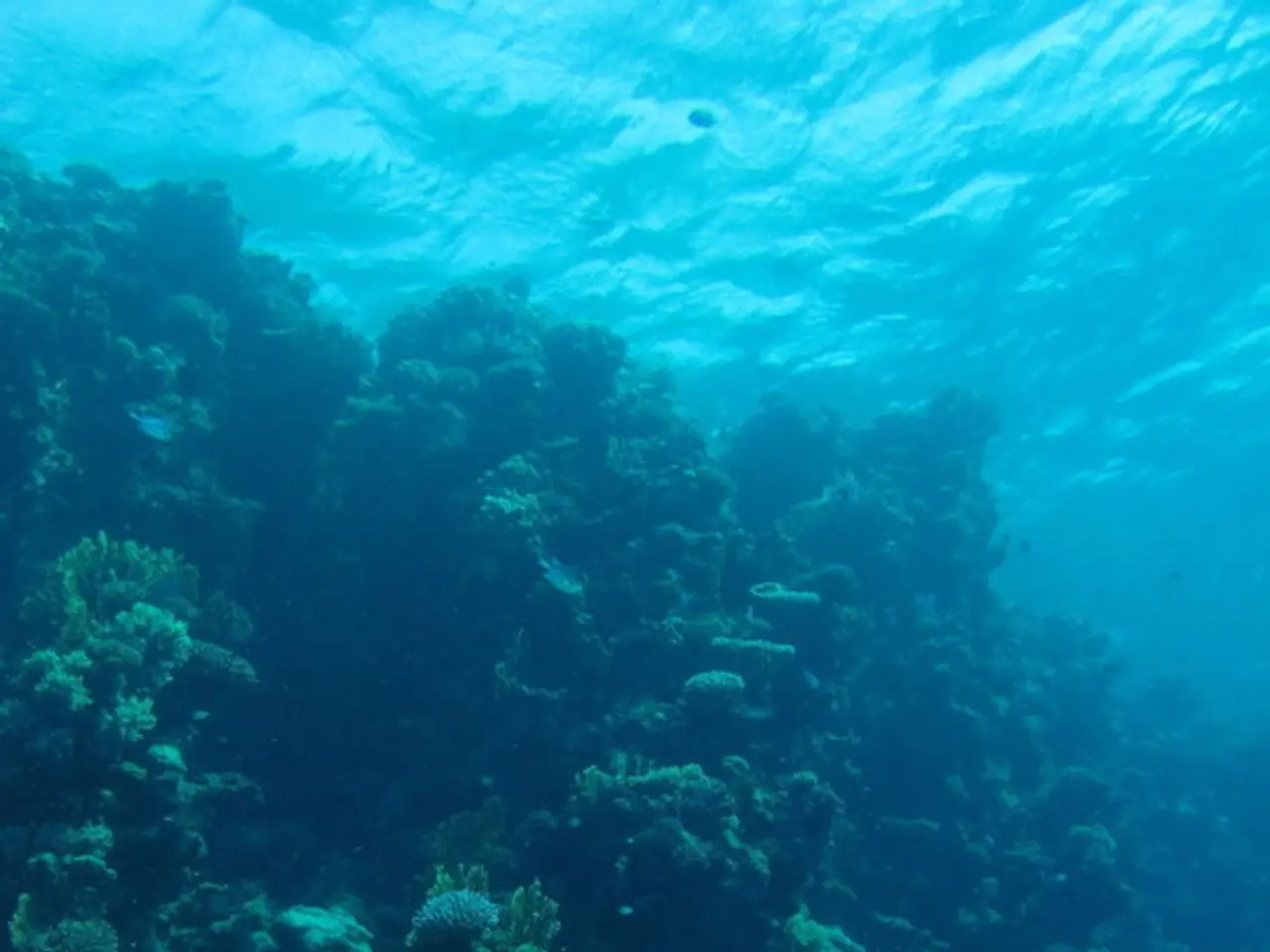Environmental emergency: widespread species facing significant decrease in population due to escalating climate issues
A new study, published in the prestigious journal "Nature Microbiology," has raised concerns about the future of Prochlorococcus, the smallest and most abundant photosynthetic organism on Earth. The study suggests that under moderate and high warming scenarios, up to half of the Prochlorococcus population in tropical oceans could disappear by 2100.
The research, led by François Ribalet of the University of Washington in Seattle, predicts that regional surface water temperatures could exceed the optimal range for Prochlorococcus by the end of the century under both scenarios. This decline in Prochlorococcus population could trigger chain reactions in marine food webs, according to the researchers.
Prochlorococcus, too small to be seen with the naked eye, lives in the upper layers of the oceans, with cells measuring about 0.5 to 1 micrometer in diameter. It inhabits over 75% of the sunlit ocean surface and makes up almost half of the phytoplankton biomass in nutrient-poor tropical and subtropical waters.
However, Bernhard Fuchs from the Max Planck Institute for Marine Microbiology in Bremen has criticised the sampling method used in the study, stating that it is limited to the surface layers and leaves out what happens in deeper layers. Fuchs also considers the measurement method used in the study to be outdated.
The high genetic diversity among different Prochlorococcus strains may not be enough to enable adaptation to rapid warming due to its small genome, according to the study. However, research indicates that Prochlorococcus shows some adaptation to climate change in deeper ocean layers, but this is limited due to its preference for well-lit, surface waters. Some strains may exhibit genetic variability that could support partial adaptation.
The cyanobacterium Synechococcus could potentially benefit from the climatic development and partially fill the ecological gap left by Prochlorococcus at higher water temperatures. Hundreds of thousands of Prochlorococcus cells can be found in a single drop of water, making it a crucial starting point for marine food chains.
The study's results are limited by the fact that only a few measurements have been taken in spatially restricted marine areas so far. Less common heat-tolerant variants have not been adequately captured by the method used in the study. Prochlorococcus cells increase their division rate up to a water temperature of about 28 degrees Celsius, but this rate drops sharply after that, reaching a value typical of conditions far from optimal for Prochlorococcus at 31 degrees.
Under the RCP8.5 concentration pathway, average sea temperatures could rise by 3.8 degrees Celsius. Many marine regions could then experience water temperatures of around 30 degrees, posing a significant threat to the survival of Prochlorococcus and the delicate balance of marine ecosystems.
Read also:
- Understanding Hemorrhagic Gastroenteritis: Key Facts
- Stopping Osteoporosis Treatment: Timeline Considerations
- Tobacco industry's suggested changes on a legislative modification are disregarded by health journalists
- Expanded Community Health Involvement by CK Birla Hospitals, Jaipur, Maintained Through Consistent Outreach Programs Across Rajasthan








